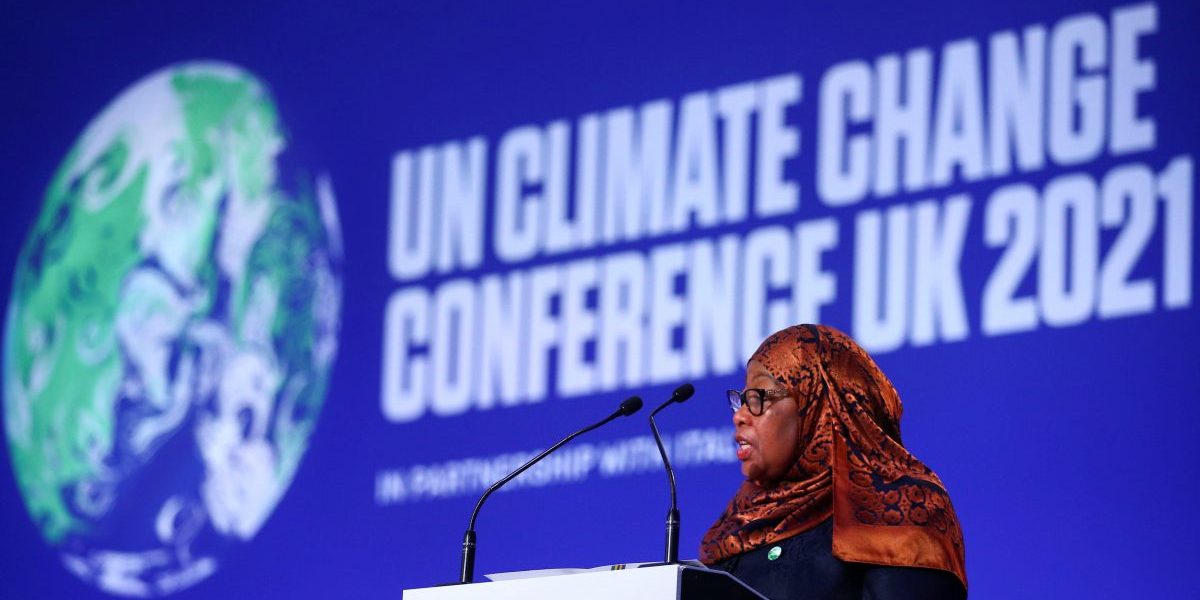The first week that passed provided a glimpse into the thoughts of presidents, prime ministers and leaders as they gave their formal addresses to the world. It appeared that they finally realised the urgency needed to act on this crisis, but it remains to be seen whether their words will translate into action.
There were quite a few key takeaways from COP 26:
Week one
- Almost 100 countries pledged to end deforestation and land degradation by 2030, covering more than 85% of forests on earth. In addition, the pledge has led to more than $13.4 billion in funding, which will be prioritised for developing nations.
- The Global Methane Pledge, committed to by more than 100 countries, aims to cut methane emissions by 30% by 2030.
- The Global Coal to Clean Power Transition Statement means that only a few countries will procure new coal power, representing a step towards a global just energy transition.

In addition to these impressive global commitments, the youth of the world also shone at the Climate Talks. At the SDG7 (affordable and clean energy) pavilion, energy compacts were a hot topic and Student Energy, a global youth-led organisation, committed to raise $150 million by 2030 to support youth (18-30) with skills, mentorship, and training necessary to accelerate progress on SDG7. This compact brought to light the specific needs of youth for capacity building, and that funding for youth is vital, especially in the field of entrepreneurship.
Youth start-ups need funding at all stages of their business to make it a viable venture. As unemployment rates rise globally, and particularly within South Africa, the need for businesses in the green economy, owned and operated by youth, is clear.
Unemployment and education are inextricably linked and the SDG7 Youth Constituency held a side event titled ‘Bridging the Generational Divide: Championing Youth Innovation’ to discuss this. A topic of particular interest to the panellists was climate change education of youth in schools. It is understood that the impacts of climate change will be worst felt by developing countries but many communities’ in these countries are still not really aware of this. To be more effective, climate education needs to be tailored to a person’s circumstances, and the impacts need to be explained in the context of the land on which they survive. How this will bring about awareness and assist them in adapting to the changing climate was discussed throughout the event.
Lastly, the official handover of the YOUNGO Global Youth Statement to COP 26 and leaders cemented the global demands of youth. During the handover, the First Minster of Scotland, Nicola Sturgeon, expressed that the leaders of today need youth more than youth need them, as leaders. She also praised the fact that youth are still willing to put their trust in those in power to fix the climate change crises when leaders have betrayed that trust so many times in the past.
These events and platforms are potent accelerators of youth power and demonstrate how youth are active, effective agents of change, particularly when they are self-organised and are free to act independently.
Week 2
The second week brought COP 26 to a close. It certainly wasn’t the ending we were expecting. With emotions running high, and even tears shed, there was a late ad hoc change to the outcome document, the Glasgow Climate Pact. It made one wonder if the implementation of NDCs (Nationally Determined Contributions) would share the same fate.
A few takeaway points from week two are:
- The ‘phase down’ of coal instead of the ‘phase out’ of coal: approximately 200 countries agreed to end fossil fuel subsidies and reduce the use of coal; a weak outcome as countries such as India, China and the US have yet to sign the agreement.
- For climate finance, the goal for developed countries to provide developing countries with a $100 billion annually until 2025, and the doubling of finance for adaptation, was reiterated.
- On mitigation, parties were urged to align their new targets with those set out in the Paris Agreement to keep the goal of staying under 1.5oC alive.
- While much attention was given to loss and damage (used to refer to harm caused by climate change) there were no tangible financial outputs other than general consensus that support would be given through loss and damaged focused technical assistance structure, the Santiago Network to address this issue to some extent.
Personally, I watched several small island states plea with world leaders to address the problem of loss and damage. These nations are already experiencing severe impacts of climate change and lack the capacity to adapt. Aminath Shauna, the Maldives Minister for Environment, said, ‘The difference between 1.5 oC and 2 oC is a death sentence for us.”
Other important highlights included former US president Barak Obama’s address, which touched on key issues, particularly youth involvement in this space. As he said: ‘… the most important energy in this movement is coming from young people … because they’re not just working for their own countries, they’re forming a movement across borders to make the older generation that got us into this mess see that we all have an obligation to dig ourselves out. And if those older folks won’t listen, they need to get out the way.”
The outcomes of COP26 were not the ideal, and it is clear that it is still up to us youth to clean this mess up. On a lighter note to the fight on climate change was advanced to some extent at COP26 and we must cerebrate these victories. We must always aim for progress no matter how small it may seem, the enemy of good is perfection.







